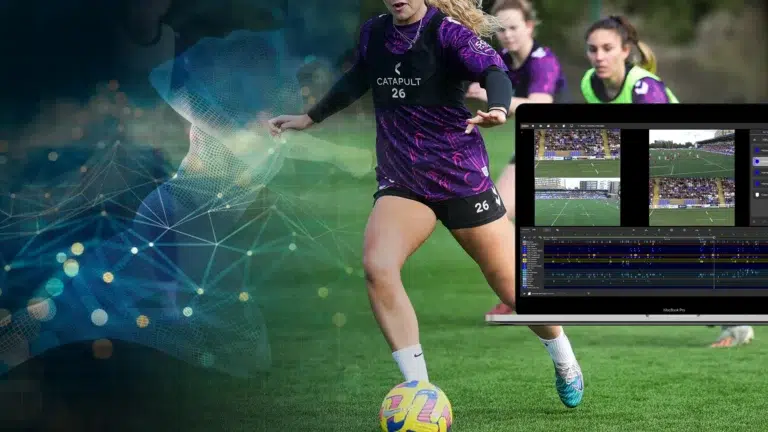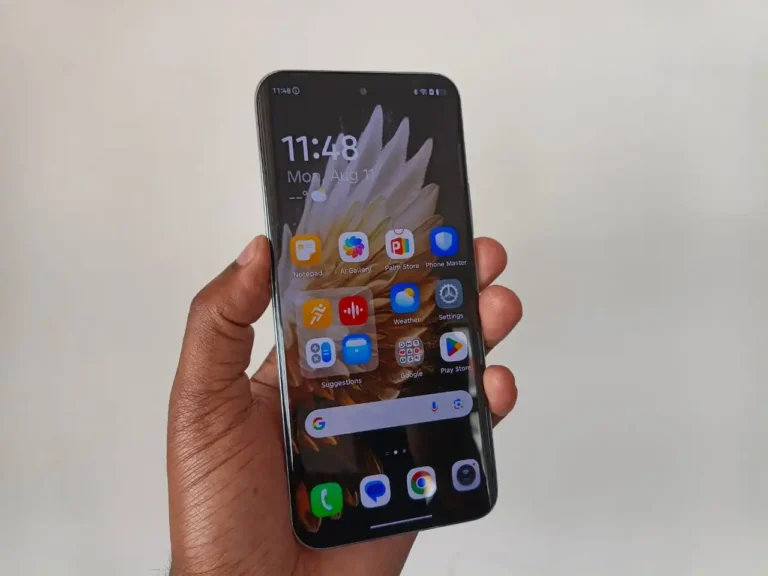Introduction
The world of sports is undergoing a massive transformation, driven by groundbreaking technological innovations. From AI-powered analytics to advanced wearable devices, the way athletes train, compete, and recover has changed significantly. In 2025, sports technology is not just enhancing performance but also preventing injuries, optimizing strategies, and improving fan engagement. This article explores the top 10 sports technology innovations that are shaping the future of athletic performance.

1. Wearable Technology and Performance Analytics
Wearable devices have become an integral part of sports, offering real-time data on athletes’ performance. In 2025, these devices are more advanced than ever, integrating artificial intelligence and machine learning to provide deeper insights.
Key Benefits:
- Advanced Monitoring: Modern wearables track heart rate variability, oxygen saturation, hydration levels, and muscle activation patterns, allowing athletes to fine-tune their training regimens.
- Injury Prevention: By analyzing movement patterns and fatigue levels, wearables can predict potential injuries, enabling preventive measures.
- Performance Optimization: Personalized feedback helps athletes adjust techniques, improve efficiency, and reduce recovery time.
Popular examples include smart compression clothing with embedded sensors, biometric patches, and AI-powered sports watches.
2. Artificial Intelligence in Training and Strategy
AI has revolutionized sports training and strategy development, offering data-driven insights to coaches and athletes.
Key Applications:
- Data Analysis: AI algorithms process vast amounts of data to identify strengths, weaknesses, and patterns in an athlete’s performance.
- Personalized Training: AI tailors training programs to individual athletes, optimizing performance while minimizing the risk of injuries.
- Game Strategy Development: AI-driven simulations analyze opponents’ strategies, helping teams develop effective counter-tactics.
AI-driven coaching assistants and real-time game analysis tools are becoming standard across professional sports leagues.
3. Virtual and Augmented Reality for Immersive Training
VR and AR technologies are redefining the way athletes train and prepare for competitions by providing immersive experiences.
Key Benefits:
- Simulated Environments: Athletes can train in highly realistic virtual conditions, improving decision-making skills.
- Real-Time Feedback: AR overlays provide instant corrections on form, technique, and positioning.
- Mental Conditioning: VR is used for mental rehearsal, helping athletes visualize their movements and game scenarios before stepping onto the field.
Sports like soccer, basketball, and boxing are leveraging VR-based training programs to enhance cognitive skills and reaction times.
4. Advanced Materials and Smart Equipment
Innovations in materials science are leading to smarter and more effective sports gear.
Key Innovations:
- Smart Fabrics: Athletic wear embedded with nanotechnology sensors provides real-time biomechanical data.
- Enhanced Footwear: Shoes with AI-driven insoles adapt to an athlete’s movement, improving balance and reducing injury risk.
- Protective Gear: Smart helmets and pads with impact-sensing technology help in concussion detection and injury management.
These advancements not only enhance performance but also prioritize athlete safety.
5. Biomechanics and Motion Analysis
Biomechanical analysis is playing a crucial role in refining athletic techniques and preventing injuries.
Key Applications:
- Motion Capture Technology: High-speed cameras and sensors track movements with extreme precision.
- Technique Optimization: AI-driven biomechanics platforms provide insights into posture, stride length, and joint angles to refine performance.
- Rehabilitation Monitoring: Motion analysis tools assist in post-injury recovery, ensuring a safe return to play.
Sports like tennis, golf, and running rely heavily on motion analysis to enhance technique and efficiency.
6. Genomic and Personalized Nutrition
Understanding an athlete’s genetic makeup has opened doors to personalized nutrition plans tailored to their specific needs.
Key Innovations:
- Genetic Testing: Identifies an athlete’s predisposition to certain injuries, metabolic efficiency, and dietary needs.
- Customized Diet Plans: AI-generated nutrition plans optimize macro and micronutrient intake based on genetic data.
- Personalized Supplementation: Athletes receive tailored supplements to improve performance and recovery.
This innovation is transforming how athletes fuel their bodies for peak performance.
7. Smart Stadiums and Fan Engagement
Technological advancements are improving the experience of spectators and creating smarter, more sustainable stadiums.
Key Innovations:
- Enhanced Connectivity: High-speed Wi-Fi and interactive apps enhance fan engagement during live events.
- Augmented Reality Viewing: Fans can access real-time statistics and player insights through AR glasses and mobile apps.
- Sustainability Initiatives: Eco-friendly stadiums leverage solar energy, smart lighting, and waste-reduction systems.
These advancements make sports events more interactive and environmentally conscious.
8. E-Sports Integration
The rise of e-sports has influenced traditional sports, leading to increased collaboration and hybrid competitions.
Key Trends:
- Hybrid Events: Combining physical and virtual competitions to engage diverse audiences.
- Training Enhancements: Gamification techniques improve reaction times and decision-making skills in athletes.
- Cross-Promotions: Partnerships between traditional sports leagues and e-sports franchises expand fan engagement.
This fusion of digital and physical sports is changing how athletes train and how fans consume sports content.
9. Blockchain for Transparency and Security
Blockchain technology is improving transparency, security, and integrity within the sports industry.
Key Applications:
- Secure Transactions: Ticket sales, sponsorship deals, and athlete salaries are protected through blockchain verification.
- Smart Contracts: Automated contracts ensure fairness in player agreements and endorsements.
- Anti-Counterfeiting: Authenticity tracking prevents counterfeit merchandise and memorabilia sales.
Blockchain is providing a new level of trust and security in sports business operations.
10. Sustainable Technologies in Sports
With increasing environmental awareness, sports organizations are adopting green technologies to reduce their carbon footprint.
Key Initiatives:
- Eco-Friendly Equipment: Recyclable and biodegradable materials are being used in sports gear and apparel.
- Energy-Efficient Stadiums: Solar panels, rainwater harvesting, and LED lighting improve sustainability in sports venues.
- Waste Management Innovations: AI-driven waste sorting and recycling programs are making sports events eco-friendlier.
These efforts contribute to a more sustainable future for sports.
Conclusion
The integration of technology in sports is revolutionizing training, performance, and fan engagement. From AI-driven analytics to sustainable stadiums, these innovations are shaping the future of athletics. As technology continues to advance, we can expect even more groundbreaking developments that will further elevate the world of sports.
FAQs
Q1: How are wearable technologies enhancing athletic performance?
Wearable technologies provide real-time data on key performance metrics, helping athletes optimize their training, prevent injuries, and track recovery.
Q2: What role does AI play in sports?
AI is used for personalized training, game strategy analysis, injury prevention, and real-time performance tracking.
Q3: How is virtual reality improving sports training?
VR allows athletes to practice in realistic environments, refine techniques, and enhance decision-making skills through immersive simulations.
Q4: What are smart stadiums?
Smart stadiums integrate digital technology for improved fan engagement, better connectivity, and eco-friendly initiatives to reduce environmental impact.
Q5: How is blockchain technology being used in sports?
Blockchain ensures secure transactions, transparent contracts, and authentic merchandise, reducing fraud and enhancing trust in sports business operations.







